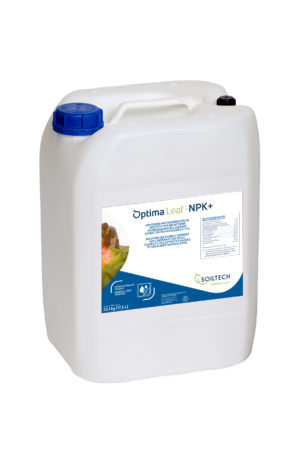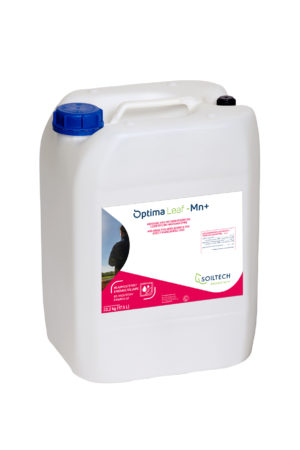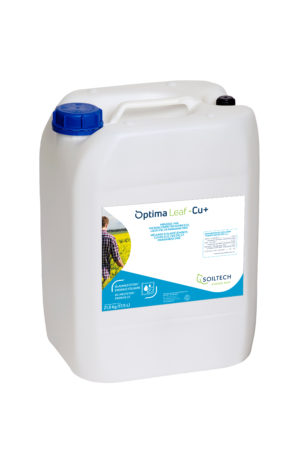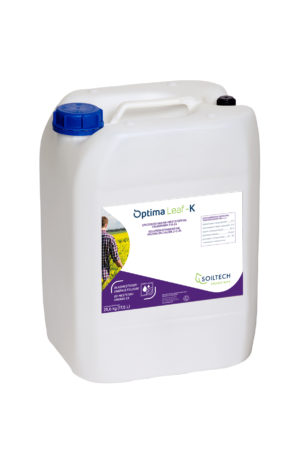Cereal crop cultivation follows a complete lifecycle: grain is sown and, after a complete growth cycle, the newly formed seeds are harvested. All cereal crops therefore experience both a vegetative and a generative phase, during which a number of distinct growth stages can be distinguished. Correctly identifying the individual growth stages of cereals is vital for a proper timing of the moments of fertiliser application. After all, a fertiliser treatment based on the growth stage is far more effective than when it would be based on the crop length or calendar date.
Select a stage for more information
Preparation prior to sowing
At this stage, the primary factor is preparing the soil prior to sowing. A well-loosened, moist soil structure is beneficial for root growth, for emergence and for the uptake of water and nutrients. Sufficient percentages of clay particles, lime and organic matter enhance the physical and chemical properties of the soil.
Soiltech does not offer any specific product for this stage.
Sowing
During the sowing period, the right conditions must be created for a uniform crop development. Important factors are seedbed preparation, sowing conditions, timing and the sowing technique. To benefit crop development, it is best that the plants start tillering at the beginning of winter. This improves the frost resistance of the crop and accelerates development in spring.
Soiltech does not offer any specific products for this stage.
Germination and root development
Germination is initiated from the moment a seed takes up water. This starts the formation of the growing point and the root system. Three leaves are formed during this growth stage and the root system develops to a depth of up to 40-50 cm.
Soiltech does not offer any specific products for this stage.
Tillering
Tillering is characterised by the formation of tillers (lateral shoots each with their own specific growing point). These tillers develop from the axillary buds of the first formed leaves. At the same time, a large, branched root system is formed during the tillering stage. The newly formed crown roots anchor the crop and ensure a good uptake of water and minerals from the soil.
The plant has an increased nutrient need in this development phase in order to be able to grow. This can be supported by applying a foliar treatment with 2 l/ha Optima Leaf-NPK+* supplemented with 0.5-1.0 l/ha Optima Leaf-Mn+ during this phase.
* This product requires national registration and is at this moment only available in The Netherlands, Belgium and France.
Relevant products
Stem elongation
The stem elongation period only lasts a few weeks. Crop development during this stage is characterised by high biomass production of the stems and leaves. To achieve this high production, the plant needs ample availability of assimilates and therefore a high photosynthesis activity is required.
The plant has an increased nutrient need in this development phase in order to be able to grow. This can be supported by applying a foliar treatment with 2 l/ha Optima Leaf-NPK+* supplemented with 0.5-1.0 l/ha Optima Leaf-Mn+ during this phase.
Copper is an indispensable element during stem elongation. A copper deficiency results in a significant reduction in lignin formation which can lead to weaker stems and an increased risk of lodging. Two to three spray applications of 1.0 l/ha Optima Leaf-Cu will supply the crop with sufficient copper.
* This product requires national registration and is at this moment only available in The Netherlands, Belgium and France.
Relevant products
Ear formation
At the end of the stem elongation stage, the plant enters the generative phase and starts to form ears. Influenced by high growth activity, the growing point of the stem develops into an ear. During this process, the crop has a relatively high assimilate and nutrient demand.
Particularly copper is a critical trace element at this stage, as a copper deficiency can cause ears to form, but not to fill (so-called blind ears). A foliar application of 1.0 l/ha Optima Leaf-Cu supports the development of productive ears.
Relevant products
Grain fill and ripening
The grain filling stage is characterised by a strong growth of the grains. The crop ripens as the leaves and haulms die off. Initially, the grain weight will increase considerably. The moisture content of the grain then decreases causing it to harden so it can be stored for a long period. The grains are the plant's storage organs and are rich in protein and carbohydrates. The fertilisation strategy can influence the protein/carbohydrate ratio in the grain.
Nitrogen is an important component of proteins, up to 80% of the nitrogen uptake ultimately ends up in the grain.
If the nitrogen level is low, it is recommended to carry out a foliar treatment with 1.0 l/ha Optima Leaf-NPK+*.
Potassium is extremely important for a good sap flow and stimulates the transport of carbohydrates to the grain. To boost the transport of carbohydrates to the grain, several foliar applications of 2.5 – 5 l/ha Optima Leaf-K are recommended.
* This product requires national registration and is at this moment only available in The Netherlands, Belgium and France.




